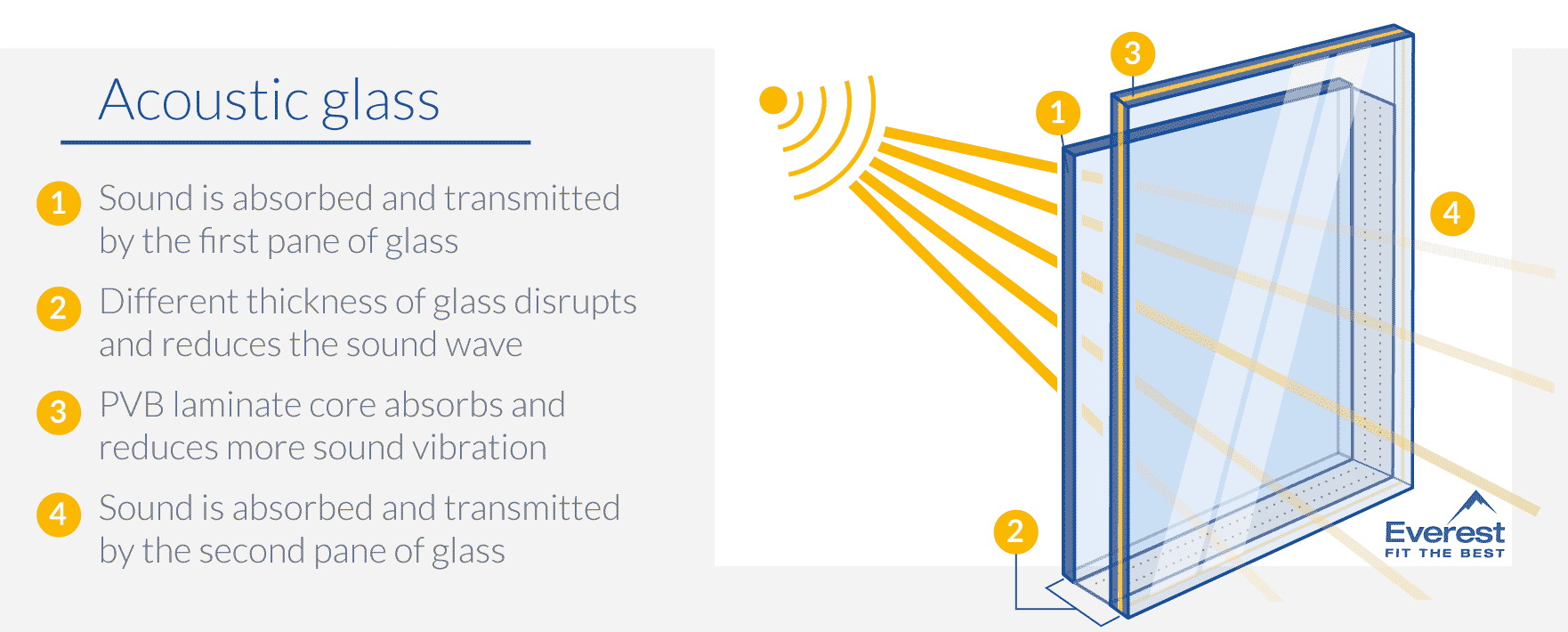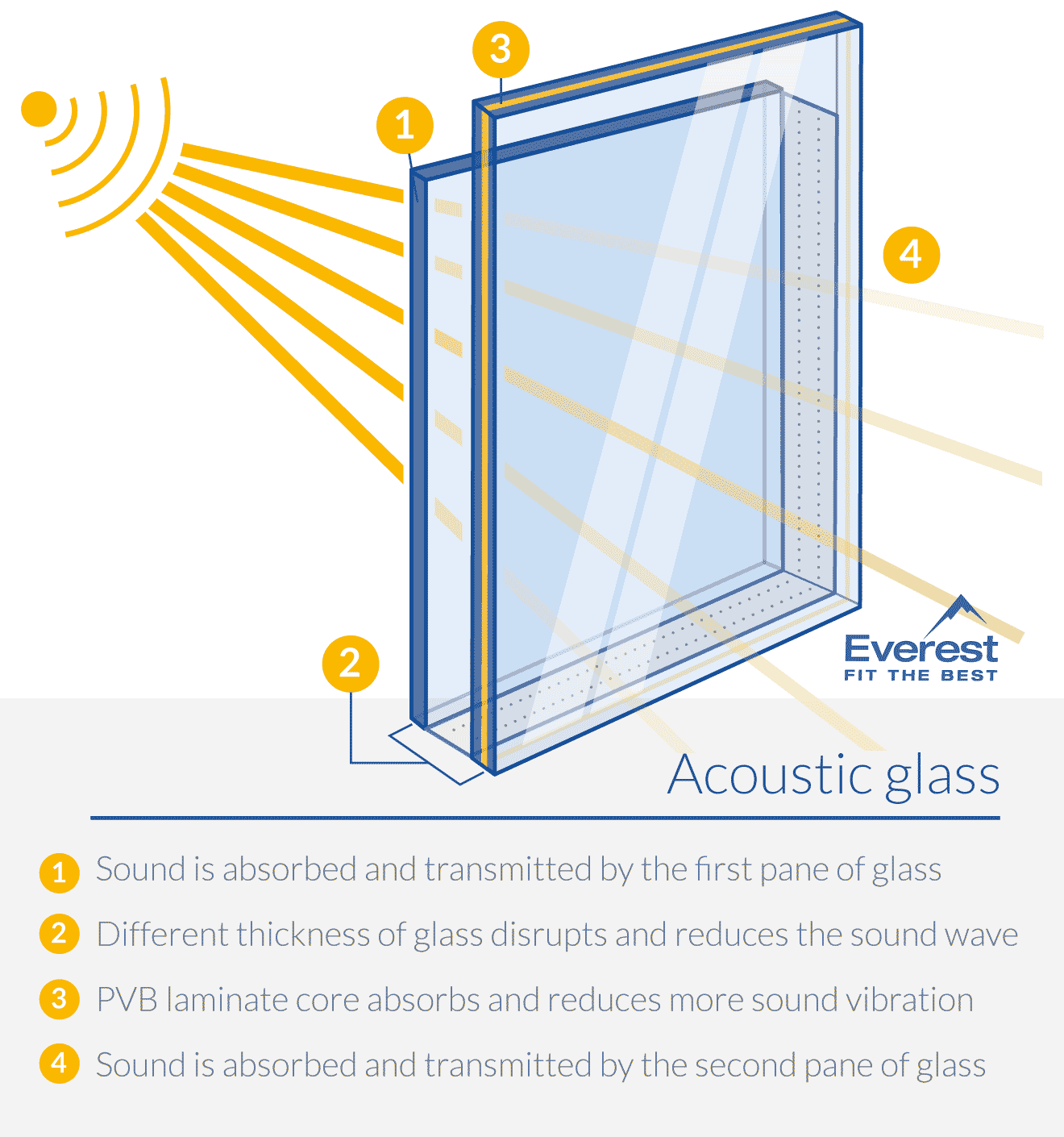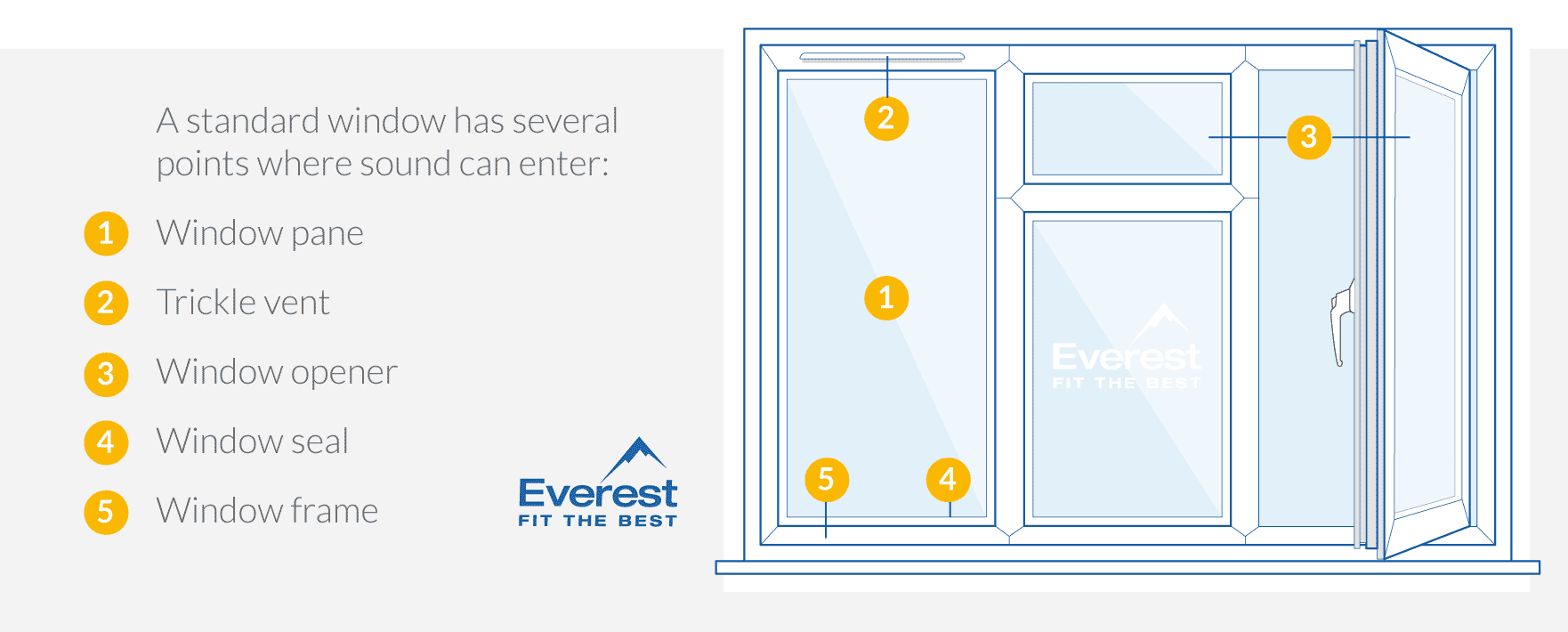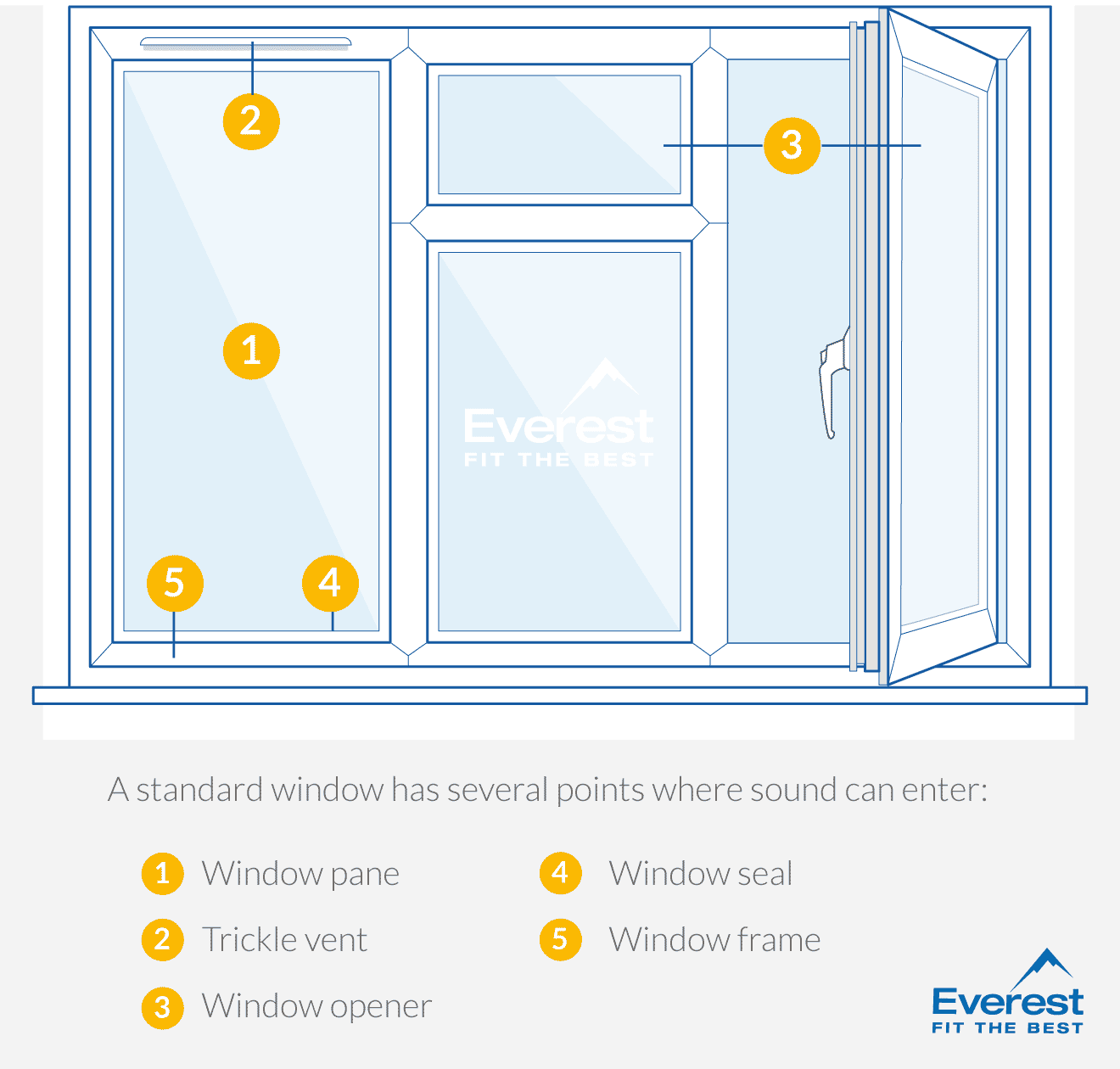How Does Acoustic Glass Work?
When sound waves hit glass, the vibration is absorbed by the glass and is transmitted out of the other side. Every time sound travels through a solid object, some of the vibrations are absorbed into the object and reduced as they pass through, but a single thin pane of glass can only absorb a small amount.
Double glazing works because there are two panes of glass absorbing the sound vibrations and the Argon gas between the panes also helps to slow and dampen the transmission of sound waves.
Specialist acoustic glass goes one step further by disrupting the soundwave, which is the most effective way to reduce noise (apart from having a solid structure so thick it can absorb all of the vibrations). Acoustic glass uses two thicknesses of panes and also has a laminate PVB sound dampening core between one of the panes. This combined effect of different surfaces and thicknesses disrupts the energy of the soundwave and reduces noise transference.


Everest noise reduction windows work by:
- The thickness of the glass
- Asymmetric thicknesses of glass to disrupt the soundwaves
- Argon gas between the panes
- Depth of gap between the panes
- Sound dampening laminate between panes
How Effective Is Acoustic Glass at Reducing Sound?
Glass can only reduce noise so much and it's not possible to 'soundproof' the glass of windows and block all noise transmitting through the glass.
Standard panes of glass have different levels of noise reduction dependent on their thickness:
- 4 mm single pane - 29 dB*
- 12 mm single pane - 34 dB*
*Pilkington technical bulletin.
Using different thicknesses combined with a PVB laminate fused between the glass will make a combined effect on sound reduction:
A window with specialist acoustic laminated glass can reduce noise by:
- A standard double glazed window will reduce noise by up to 33dB**
- A window with acoustic glass will reduce noise by up to 40db**
**Everest independent testing.
Don’t forget, the 10dB difference is relative to halving/doubling the perceived noise level. So, a difference of 7dB is a notable difference in noise reduction.
In the real world, a 40dB reduction of noise means:
- Two people talking outside your window reduces to a whisper
- Heavy road traffic reduces to a quiet library
- Construction noise reduces to background music
- A jet plane taking off from an airport (305 metres) reduces to a restaurant or office.
Acoustic glass will reduce noise, but cannot make a city centre home completely silent. However, they will make a considerable difference to the quality of your life in your home.
Range of Everyday Sounds and Noise Tolerance
Everyone has their own tolerance for noise levels. What is reasonable for one person may be annoying for another. But, some noises are harmful to health over a sustained period and some can cause permanent damage to eardrums.
| Source of sound | Decibels (dB) | Impact on hearing |
|---|
| Jet take off at 25 metres | 150 | Eardrum rupture |
| Live rock music | 110 | Threshold of ear pain |
| Jet take off at 305 metres or motorbike | 100 | Serious ear damage in 8 hours of exposure |
| 737 one mile before landing, or power mower | 90 | Likely ear damage in 8 hours of exposure |
| Legal limit for work noise | 85 | Hearing protection needed |
| Average factory noise | 80 | Possible ear damage in 8 hours |
| Motorway at 15 metres, vacuum cleaner or music in a living room | 70 | Annoyingly loud to some |
| Average office noise, or restaurant conversation | 60 | Reasonable level (half the level of 70dB) |
| Conversation level at home | 50 | Quiet |
| Whisper or rustling leaves | 20 | Very quiet |
Data source
Employers in the UK must provide ear protection for employees at 85 decibels and above.
How Do Windows Let Noise into a Home?


Windows usually cover a large surface area in a wall and have three main points of weakness to allow sound leakage into a room:
- The window pane is a large surface area vulnerable to sound transmission which is variable depending on the type of glazing used. Everest offers specialist noise reducing windows that can help to make a big difference.
- The window frame might have trickle vents, more window openers or could have micro gaps in the seals around the glass. This is where a solid frame with limited openers and high-quality seals and construction will make all the difference. Trickle vents are required by building regulations.
- The window installation is critical. Ideally, a frame should fit as snugly as possible in the wall with minimal use of fillers and packers that can create micro gaps. If your specialist noise reduction window isn’t fitted correctly, you won't benefit from the best noise reduction it can achieve.